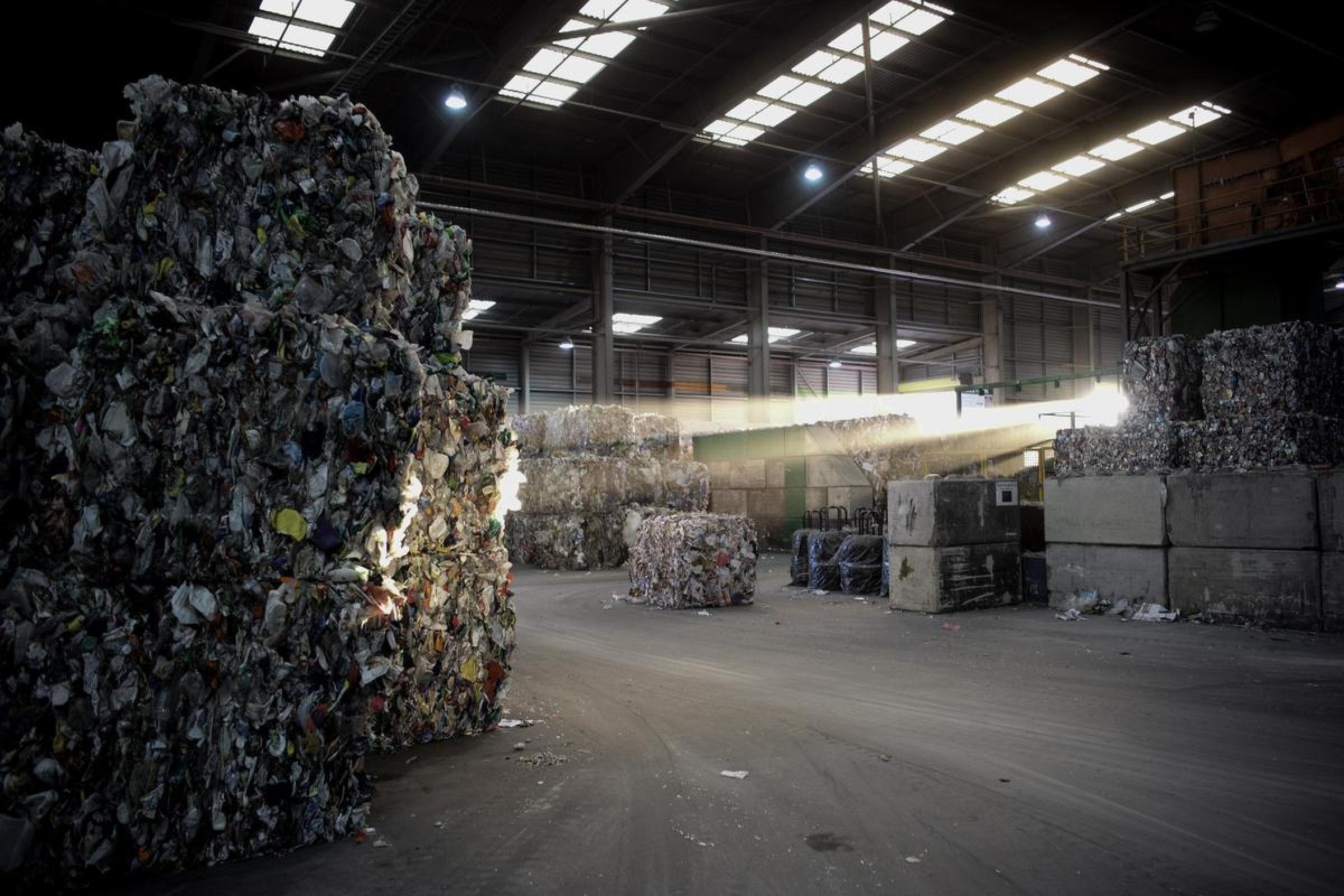
The Plastic Question
Making the Right Choice Is Harder Than It Looks
A Backgrounder Report By: Dan Morrison, Journalist, Email
Bryony Drought was frozen in the fruit section.
To her left on a recent shopping trip, the 26-year-old London school teacher saw “normal” bananas, grown using pesticides and chemical fertilizer. On the right were organic bananas — swaddled in clear plastic wrap. Drought was exasperated, torn between a desire for natural eating and a commitment to use less plastic.
“What's the best option? It's very difficult,” she says. “I follow lots of people on Instagram who are advocates for reducing plastic, and they're constantly coming out with statistics. I was reading one thing a few days ago, saying that in 2050 there's going to be more plastic in the ocean than fish...We need to stop what we're doing.”
A high tide of journalism, activism, and corporate public relations has made plastic a priority for people around the globe.(1) In an Orb Media online poll of 42,000 people in 30 countries, a quarter said they were “extremely worried” about plastic’s impact on our world.
But heightened awareness has also bred confusion over people’s responsibilities and options, and the role of governments and industry in reducing plastic pollution. Twenty-one percent of survey respondents said the answer to plastic pollution is increased recycling, and ten percent favored reducing consumption, answers broadly aligned with expert opinion. But thousands more suggested eliminating all plastic, or using alternative materials like paper and glass, which studies show could be more harmful to the environment than plastic itself.
“There’s a great deal of stress that is felt with this increased information,” says Norah MacKendrick, an environmental sociologist at Rutgers University. “Consumers feel like they’re on their own.”
It’s conventional wisdom that the world has a plastic problem. Last month,(2) the Collins Dictionary named “single-use” its Word of the Year, noting that use of the term for throw-away plastic has jumped 400 percent since 2013.(3)
Plastic is clearly an environmental crisis, with an estimated eight million animal-killing tons entering the oceans each year.(4)
“There’s just a smothering, and an overwhelming sense that you can’t control it,” says Basil Pather, conservation warden at the coastal Beachwood Mangrove Reserve in Durban, South Africa, where volunteers haul out between one and five tons of plastic dinnerware and containers every week.
Less prominent in the plastic narrative are emerging questions over microscopic plastic pollution in food, air, soil, and water, and the safety of chemical additives in plastic food packaging - areas where scientists are racing to learn the implications for human health.
Proposals to make consumer brands and plastic producers responsible for the cost of plastic waste are slowly taking shape. So is a revolution in product design that would make more plastic items easier to recycle. Packaging comprises fully 40 percent of the more than 380 million tons of plastic produced globally each year.
Try to go a day without touching plastic. Synthetic polymer is embedded in daily life, from clothing to furniture and medical care to your smartphone. It’s integral to a globalized food supply chain.
“Plastic is a great material for that application because it's a water barrier, it's an oxygen barrier, it's lightweight and it helps preserve food,” says Arturo Castillo, an industrial ecologist at Imperial College in London. “So we have a lot of food packaging, and we need it.”
“Plastic is not a problem, but littering is a problem,” says B. Swaminathan, a veteran of the plastics industry in Asia and Africa. “You're shooting the messenger.”
Swaminathan’s messenger is taking a beating.
Jurisdictions around the world, including the European Union, are moving to restrict disposable items like plates and straws. At least 33 countries ban plastic bags,(5) but enforcement is spotty. Kenya has one of the most stringent bans — five manufacturers and 70 distributors were prosecuted there in the first half of 2018.(6) But banned disposable bags have been replaced with thicker, ostensibly-reusable, bags of polypropylene fiber – in other words, more plastic. These are now appearing as street litter, says Abel Kamau of the Kenyan Association of Manufacturers. Kenyan officials are aware of the problem, and are developing standards for sustainable bags, says Cyrille-Lazare Siewe of the United Nations Environmental Program.
Perfect solutions are elusive; simple ones deceive.
Take compostable plastic bags. The name suggests gardens and mulch. But compostable plastic can’t degrade in nature; it has to be separated from other waste and heated to 70 degrees Centigrade at an industrial facility. Others see bioplastics, made from plants, as an answer, but most bioplastics are molecularly similar to plastic made from petroleum, with the same environmental hazards,(7) experts say.
Ten percent of Orb’s survey respondents recommended using glass containers. But studies show that making and moving glass bottles uses nearly five times more energy than plastic.(8)
Similarly, 73 percent of Americans surveyed by Gallup(9) think paper bags are greener than plastic — a natural assumption. Analyses of both materials’ life cycles, however, show plastic bag production causes significantly less air and water pollution.(10)
“You’re in the plastic age,” says Indian plastics titan P. Marimuthu, who produces more than two billion forks, trays, yogurt cups, and shampoo bottles each year. “What is the alternative to plastic? Nobody gives an answer to this.”
Meanwhile, momentum is growing to force manufacturers to change product and package design to make reuse and recycling easier. Today, most packaging contains too many different materials to be easily recycled — a waste of waste, explains Ben Johnson of Suez Waste and Recovery UK.
Many experts now say plastic producers or consumer brands should pay for the disposal of their packaging, instead of pushing the cost onto communities. “Shampoo, soap, cosmetics, groceries, shaving cream, toothpaste. They are discarded, right?” says Swaminathan. “Now where are these coming from? These are coming from the brand owners, the large, big companies.” Industry organizations counter that new rules will hinder innovation.(11)
Under proposed “Extended Producer Responsibility” rules that are gaining traction in Europe and elsewhere, “if you've got a terrible material that is never going to be recycled, you pay a higher fee” for disposal, Johnson says over the clamor of conveyors and sorting machines at a plant in Avonmouth, England. Products with difficult packaging “would be more expensive fundamentally, and the good, better ones would be cheaper” for consumers.
Still, there’s the human factor.
Research by Sarah Whitley of Oklahoma State University shows how the mood of a community can affect recycling rates. At the University of Maryland in College Park, the average weight of campus recycling was nearly 50 percent higher after a college basketball victory than after a loss or tie. Further, Whitley’s analysis of municipal data found that the total mass of household recycling collected in the London borough of Kensington fell on rainy days by one kilogram for every millimeter of precipitation.
With such complexity, it’s natural to pine for “a perfect solution to those floating islands of plastic out in the sea,” says Dominique Broussard, who researches science, media, and policy at the University of Wisconsin.
Overlooked, for now, are issues that can’t be mitigated by recycling or resolved with a canvas shopping bag.
One is microplastic. Since Orb Media first reported microscopic plastic contamination in bottled water last March, new studies have found these contaminants in German mineral water,(12) South African tap water,(13) and Italian soft drinks.(14) No one knows if consuming microplastic is harmful or not. It’s an emerging area of research, one the World Health Organization is working to assess.
Microplastic is also an important environmental pollutant. A 2017 study(15) revealed that a five-kilogram machine load of polyester laundry can release as many as six million microplastic fibers into wastewater. “We need to find design solutions at the beginning of their life to reduce the amount of shedding,” says Emma Priestland, of Friends of the Earth.
Even in a future where improved product design and new regulations reduce plastic waste, questions over the safety of chemicals in food packaging will still have to be addressed. Researchers have found dozens of hazardous chemicals that are approved for use in plastic.
For example, six chemicals the European Union has declared too toxic for use in plastic toys(16) are nevertheless permitted for food packaging,(17) according to a recent study.
So what’s London shopper Bryony Drought, or any of us, to do?
Real changes will only come through government action, says MacKendrick, author of “Better Safe Than Sorry: How Consumers Navigate Exposure to Everyday Toxics.”
“Make the best choice that you think you can make, but stop feeling guilty about it,” MacKendrick says. “Direct that sense of frustration [and] anxiety... at the organizations and institutions that are responsible for making the decisions about what ends up in our grocery stores in the first place.”
